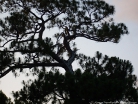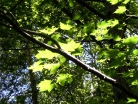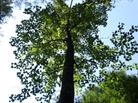


Monday, June 16, 2025

|
|
|
|
|
| A-Z scientific | ||
| A-Z by Common Name | ||
| Families | ||
| Browse by State | ||
| Rare or Endangered Species | ||
| Trees_with_Special_Uses | ||
| Tallest and Biggest |
| Aceraceae Maple Family | ||
| Anacardiaceae Sumac Family | ||
| Annonaceae Custard Apple Family | ||
| Aquifoliaceae Holly Family | ||
| Arecaceae, Palm Family | ||
| Betulaceae Birch family | ||
| Bignoniaceae Trumpet Creeper Family | ||
| Burseraceae Frankincense Family | ||
| Caprifoliaceae Honeysuckle Family | ||
| Chrysobalanaceae Coco-plum Family | ||
| Cornaceae Dogwood Family | ||
| Cupressaceae Cypress Family | ||
| Cyrillaceae Cyrilla Family | ||
| Ebenaceae Ebony Family | ||
| Ericaceae Heath Family | ||
| Fabaceae Pea Family | ||
| Fagaceae Beech Family | ||
| Hamamelidaceae Witch Hazel Ffamily | ||
| Hippocastanaceae Horse Chestnut Family | ||
| Juglandaceae Walnut Family | ||
| Lauraceae Laurel Family | ||
| Leitneriaceae Corkwood Family | ||
| Magnoliaceae Magnolia Family | ||
| Meliaceae Mahogany Family | ||
| Moraceae Mulberry Family | ||
| Myricaceae Bayberry Family | ||
| Myrsinaceae Myrsine Family | ||
| Myrtaceae Myrtle Family | ||
| Nyctaginaceae Four Oclock Family | ||
| Olacaceae Olax Family | ||
| Oleaceae Olive Family | ||
| Pinaceae Pine Family | ||
| Platanaceae Plane Tree Family | ||
| Polygonaceae Buckwheat Family | ||
| Rhamnaceae Buckthorn Family | ||
| Rosaceae Rose Family | ||
| Rubiaceae Madder Family | ||
| Rutaceae Rue Family | ||
| Salicaceae Willow Family | ||
| Sapindaceae Soapberry Family | ||
| Sapotaceae Sapodilla Family | ||
| Simaroubaceae Quassia Family | ||
| Styracaceae Storax Family | ||
| Symplocaceae Sweetleaf Family | ||
| Theaceae Tea Family | ||
| Tiliaceae Lindon Family | ||
| Ulmaceae Elm Family | ||
| Taxaceae Yew Family | ||
| Yucca Family |
| Maple A-Z |
| sumac_family_a-z |
| custard_apple_family_a-z |
| holly_trees_a-z |
| palm_family_a-z |
| birch_family_a-z |
| trumpet_creeper_family_a-z |
| honeysuckle_family_a-z |
| dogwood_family_a-z |
| cypress_family_a-z |
| heath_family_a-z |
| pea_family_a-z |
| beech_family_a-z |
| walnut_family_a-z |
| magnolia_family_a-z |
| olive_family_a-z |
| rose_family_a-z |
| willow_family_a-z |
| franklinia |
| elm_family_a-z |
| Federal List | ||
| State Lists | ||
| Invasive_species |
| Restoration of the American Chestnut | ||
| Restoration of the American Elm | ||
| Sustainable Forestry |
| Contact Us | ||
| Our Contributors | ||
| Photo of the Month | ||
| Usage Requirements | ||
| FAQ | ||
| Report a Broken Link |
| photo_submission |
| Photo Store |
™
Frequently Asked Questions

Want to add your tree to our picture gallery? Click here for details!
-Color denotes a tree that is rare or endangered

Don't see your question? Please feel free to contacts here.

Custom Search






Tree lists:
•A-Z by scientific
name
•A-Z by common
name
•By Family
For state A-Z list click state name below.
•A-Z by scientific
name
•A-Z by common
name
•By Family
For state A-Z list click state name below.
Q. How do you read a botanical name? What are all those periods and abbreviations?
A.
A.
Other common names this
species may be referred to
depending on the region.
The
common
name used
on our site
is always in
bold.
Botanical
name
Refers to the original
naming botanist, in
this case (L), then a
2nd botanist who
made a change to
the name, Mill
Genus
name
Species
name






Example 1: Abies balsamea (L.) Mill- Balsam Fir, Balsam, Canadian Balsam, Eastern Fir, Bracted
Balsam Fir, Blister fir, Balm of Gilea
Balsam Fir, Blister fir, Balm of Gilea
Example 2: Pinus elliottii Englem var. elliottii- Slash Pine

Pinus elliottii has multiple distinct forms,
or varieties (var.), which are given
individual names. See example 3 below.
Example 3: Pinus elliottii Englem. var. densa Little & Dorman

Original naming botanist

Original naming botanist who gave
distinction to the varieties within the
species
Specific name for
variety

Q. When should you prune trees?
A. Generally speaking, the only constant rule when talking about the 'when' of pruning is never ever EVER prune in the fall. Pathogens causing diseases like heart rot are more active during that time so making cuts on your tree opens them up to possible infection until they can heal over. There are different times for pruning to encourage flowering, new growth, thickening or thinning the canopy, so the best thing to do is follow the best practice for what your hoping to accomplish with pruning. We don't have an in depth article on the in's and out's of tree pruning yet but there are other resources on the web available. Please don't try to take large branches down yourself. Hire an arborist or landscape professional you trust and make sure to ask if they employ the 3 cut method. This is the best way to ensure you continue to have healthy trees after pruning.
Q. How much carbon dioxide does one tree remove from the air?
A. One mature tree absorbs approximately 13 pounds of carbon dioxide a year. For every ton of wood a forest grows, it removes 1.47 tons of carbon dioxide and replaces it with 1.07 tons of oxygen.
A. Generally speaking, the only constant rule when talking about the 'when' of pruning is never ever EVER prune in the fall. Pathogens causing diseases like heart rot are more active during that time so making cuts on your tree opens them up to possible infection until they can heal over. There are different times for pruning to encourage flowering, new growth, thickening or thinning the canopy, so the best thing to do is follow the best practice for what your hoping to accomplish with pruning. We don't have an in depth article on the in's and out's of tree pruning yet but there are other resources on the web available. Please don't try to take large branches down yourself. Hire an arborist or landscape professional you trust and make sure to ask if they employ the 3 cut method. This is the best way to ensure you continue to have healthy trees after pruning.
Q. How much carbon dioxide does one tree remove from the air?
A. One mature tree absorbs approximately 13 pounds of carbon dioxide a year. For every ton of wood a forest grows, it removes 1.47 tons of carbon dioxide and replaces it with 1.07 tons of oxygen.












